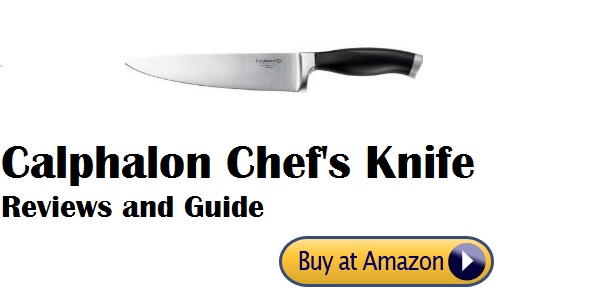Ceramic Kitchen Knives
Ceramic kitchen knives are an area that the editors from this site have steered clear of until now. We’ve touched upon the pros and cons (mostly cons) in a few articles, but have never taken a close look at what’s out there in regards to ceramic knives. We thought maybe if we buried our heads long enough, this new trend towards materials other than steel would go away. We’re traditionalists, but we know there’s a large and steadily growing group of knife enthusiasts that swear by their ceramic knives and won’t use anything else. For that reason alone, this relatively new market warrants a closer look.
What are Ceramic Blades Actually Made Of?
Ceramic? They’re making knives out of ceramic? At first, most people envision glass-like blades that will shatter the first time you so much as breath on them wrong. When I mentioned to my wife I was writing an article on ceramic kitchen knives, the first thing she asked is how fragile they are. To truly understand a blade, you have to understand how it is made, so let’s take a closer look at the material these knives are crafted from.
Zirconium dioxide is the main ingredient, which starts life in powder form. This powder is combined with additives like magnesium and calcium, then dry-pressed and sintered (fired) into the shape of a blade. Yytrium oxide is then added to stabilize the zirconia, which hardens into one of the hardest blade materials on the planet. Zirconia is rated at an 8.5 on the Mohs mineral hardness scale, while hardened steel clocks in at 6 to 6 and a half.
Here’s a great step-by step breakdown of how ceramic knives are made.
Why Choose Ceramic Kitchen Knives?
The aforementioned hardness makes for a razor-sharp cutting edge. Ceramic knives are sharp, and they tend to hold their edge longer than similarly priced steel blades do. Ceramic knives perform well in environments where steel doesn’t hold up, since the non-metal material is resistant to caustic materials. They are light-weight and aren’t susceptible to rust. If you often leave your cooking utensils in the sink overnight and want something that won’t corrode or discolor, then ceramic knives should be right up your alley.
The ceramic used is a very dense material, which means there are less pores on the surface. This allows the time-pressed chef to cut something, then quickly rinse the knife and move on to something else without having to worry about any of the taste transferring over. This also means this type of cutlery is marginally more sanitary, because there are less pores to trap food and grime.
The Negative Side
While ceramic knife enthusiasts are quick to point out the pros of owning a set of ceramic knives, they often fail to mention the dark side. Ceramics have their place in the kitchen, but they aren’t the do-all, cut-all solution to your cooking needs. Making a knife blade out of a super-hard material has its downside. Hard equates to brittle. Granted, your ceramic knife probably isn’t going to break the first time you drop it in the sink, but you still need to take care not to drop it on your hard kitchen floor. I’ve seen videos of ceramic enthusiasts dropping a ceramic knife on the tile tip-down repeatedly, so they aren’t as fragile as some steel blade traditionalists would have you believe.
The biggest con I found was that you need to watch what you cut with it. Frozen food and items with bones are a no-no and can result in chipped and damaged blade edges. Owning a set of ceramic knives could be a problem for those who chop and hack a lot of meat in the kitchen.
What’s the Verdict?
Ceramic knives are great slicing knives and are perfect for cutting and slicing fruits, vegetables and boneless meats. However, they come up short when it comes time to get down and dirty in the kitchen. For this reason, I’d suggest buying one or two ceramic blades and adding them to a good steel knife set. Ceramic kitchen knives have a spot in the kitchen, they just shouldn’t be your sole knife set. If you decide to add a ceramic knife to your existing collection, I’d suggest Kyocera:
